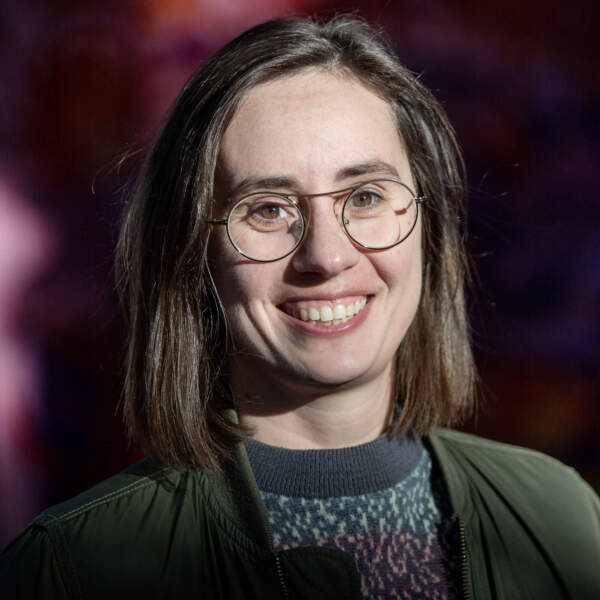Advertisement
The ICA's New Infinity Mirror Room Satiates Our Era's Desire To See And Be Seen
Resume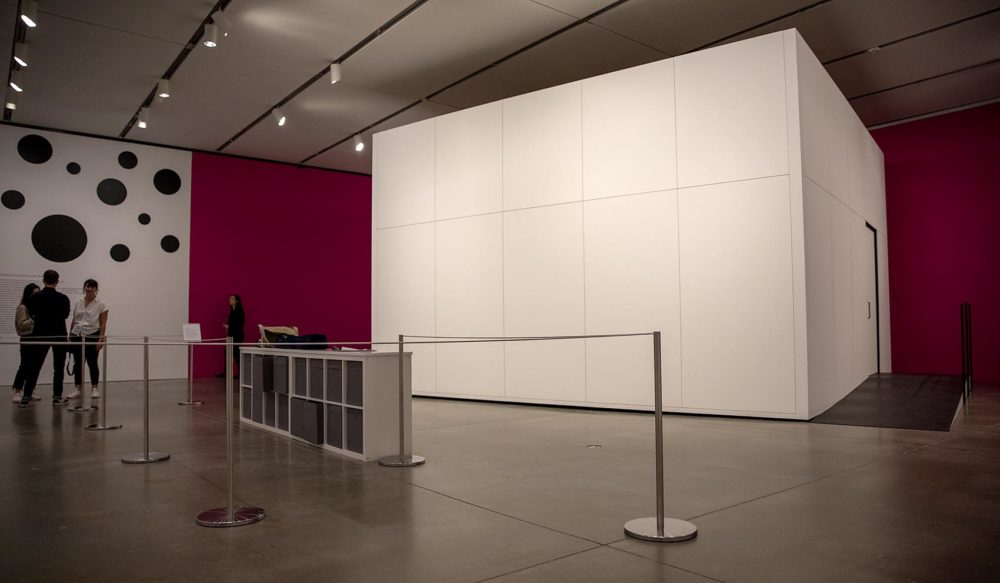
From the outside, Yayoi Kusama’s “Love Is Calling” doesn’t look like much: a big white box in the middle of a big white gallery, a room within a room. But the installation contains multitudes — quite literally, or maybe figuratively, depending on how you look at it. Inflatable neon polka-dotted tentacles protrude from the ceiling and floor, multiplying endlessly in mirrored walls. A voice emerges from the depths, intoning rhythmically in Japanese. The room glows and seems to expand to a distant horizon. The air smells faintly of rubber.
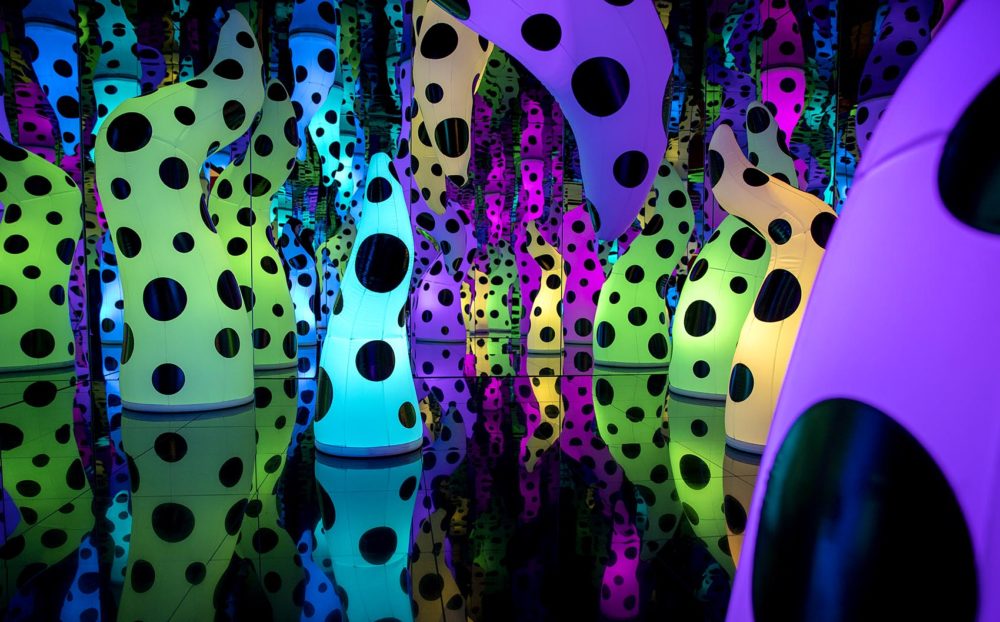
“Love Is Calling” is one of more than 20 such mind-bending mirrored environments, which Kusama calls “infinity mirror rooms.” The Institute of Contemporary Art in Boston became one of the latest in a string of institutions to add one to its collection. “Love Is Calling,” which was created in 2013, opens to the public on Tuesday, Sept. 24 and will remain on view through Feb. 7, 2021.
Kusama’s infinity mirror rooms are massively popular, as evidenced by their proliferating imagery on social media. They play cleverly with light and color, looking for all the world like miniature sparkling galaxies that defy the laws of space. At 28 feet long and 20 feet wide, “Love Is Calling” is the largest mirror room — most only accommodate one or two people at a time — and features a recording of Kusama reading her original poem “Residing In A Castle Of Shed Tears.” Like all infinity mirror rooms, it looks stunning on Instagram.
At 90 years old, Kusama is one of the most collectible — meaning expensive — living artists. Her popularity is a relatively recent phenomenon, aided by the rise of social media and her own prescient interest in the preoccupations of the digital age: experience as performance, seeing and being seen.
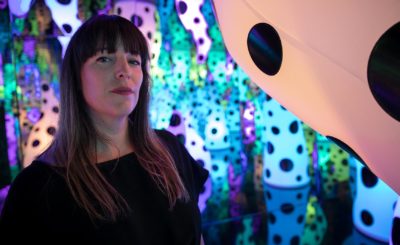
“She’s been interested in this experience, whether you call it narcissistic, whether one calls it voyeuristic, whether one calls it social,” says ICA chief curator Eva Respini. “These are ideas she’s been thinking about [since] the 1960s, and that’s what I would say is why she’s so influential. It’s as if she knew about Instagram before Instagram was even a twinkle in someone’s eye.”
A staple in New York City’s avant garde scene in the '60s, Kusama channeled the era’s radical, free-love ethos in publicity-attracting “happenings” that often involved nudity, politics, or both. Even before she created her first mirror room in 1965, the Japanese-born artist riffed on infinity, notably in her “Accumulations” series, which featured dizzying fields of phallic sculptures. Polka dots were, and continue to be, an obsession for the artist, who reported experiencing hallucinations that filled her field of vision with dots and flashes of light. Polka dots proliferate throughout Kusama’s work, subsuming the self even as they evoke a sense of cosmic oneness.
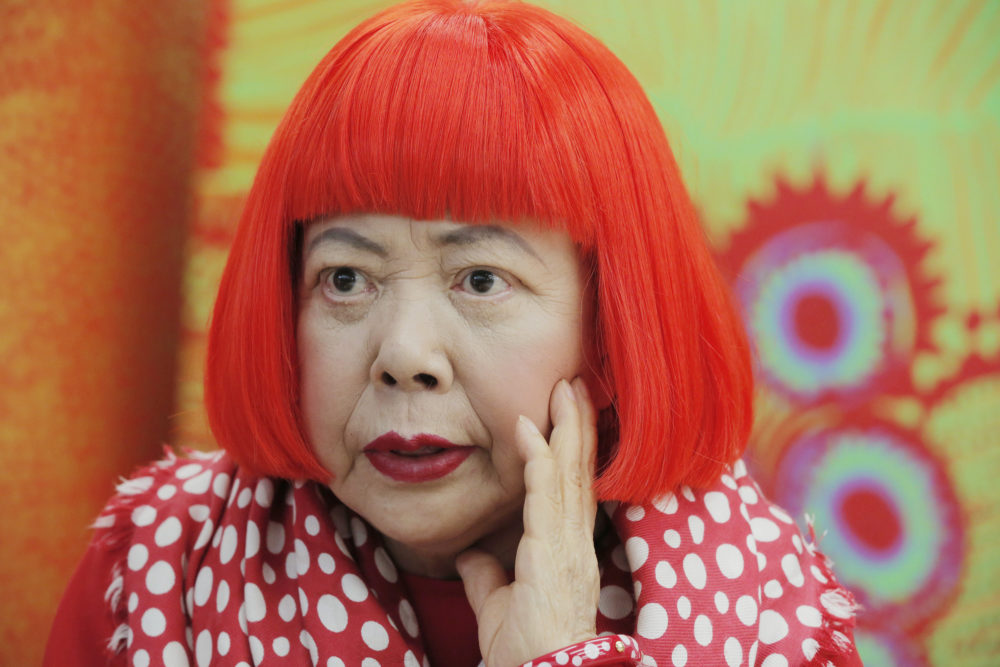
Though she was enormously productive and ran in circles with some of the greats of contemporary art — Andy Warhol, Claes Oldenburg — Kusama struggled to find success in the States, and eventually returned to Japan. A lifelong struggle with mental illness landed her in a psychiatric institution, where she voluntarily resides to this day. She never stopped creating, though for many years she focused on writing rather than visual art.
Along with renewed interest in Kusama’s work has come a reframing — an argument, essentially, that her dual-outsider status as an Asian woman caused her to become marginalized from the white, male-dominated art world. Preternaturally tapped into the zeitgeist, she was locked out of the very canon she helped create.
“Virtually every art movement of the 20th century, whether you think about pop art, minimalism, performance art, feminist art — she is kind of the forebear, the grandmother, if you will, of many of these movements,” Respini says. “And I think we wouldn't see a lot of the art that we see today without Kusama.”

A companion exhibition, called “Beyond Infinity: Contemporary Art after Kusama,” makes these resonances explicit. It features work by artists like Nick Cave, Louise Bourgeois and Ellen Gallagher, drawn mostly from the ICA’s collection.
The acquisition of “Love Is Calling” is a major get for the museum, which only began building its collection in 2006. “It's a huge opportunity to welcome people who maybe have not been to the ICA before,” says ICA director Jill Medvedow. But more than that, she says, the acquisition is a chance to educate the public about Kusama, and to help audiences "understand the struggles of a woman, and a Japanese woman, at that — a double outlier.”
“Love Is Calling” will undoubtedly attract crowds — the first batch of tickets for timed visits to the exhibit sold out in about 90 minutes. (The next round of tickets opens to members on Oct. 8 and to the general public on Oct. 15.) Visitors will have exactly two minutes to take in Kusama’s trippy vision, contemplate the vastness of the universe — and snap as many selfies as possible.
Editor's Note: This post previously included a 360 video of "Love Is Calling" with permission from the ICA. We took the video down at the request of the artist's gallery.
This segment aired on September 20, 2019.
